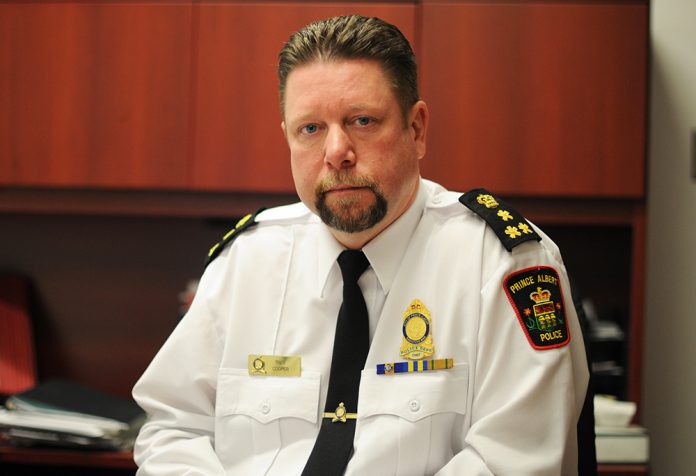Police Chief Troy Cooper isn’t surprised by new data placing Prince Albert near the top of StatsCan’s crime severity ranking.
But he said the statistics don’t necessarily reflect the true impact of crime on the community.
“We take it with a little bit of a grain of salt,” he told the Daily Herald.
The Crime Severity Index combines rates of reported crime with a weighting system to place more emphasis on relatively serious offences, like robbery, than on minor crimes, like breaching probation. When the 2016 index came out on Monday, Prince Albert placed third on a list of 305 communities. Only Thompson, Man., and North Battleford reported higher index scores.
Cooper said that pattern alone should tell us something.
“What you can see from the top 10 locations is that there’s a pattern of offending in Western Canada, particularly in the northern parts of those provinces,” he said. “So we share a lot of common contributors to crime, common risk factors.”
In one sense, Prince Albert is a victim of its geography. It also might be a victim of Statistics Canada’s methodology. The weighting system, which assigns more importance to robbery than to sexual assault, isn’t the only way to measure the severity of crime. Different choices would give different results.
“It’s subjective,” he said. “Instead of trying to determine the impact of crime on a community, they’ve used length of prison sentences.”
He pointed out the 4.5 per cent increase in Prince Albert’s score is largely driven by property crimes. The police service is responding by going after root causes, the chief said, particularly drug addiction. In the short term, though, that can push the index score up even higher.
“We’re issuing more charges and doing more enforcement,” he said. “It shows up as a negative number, because we actually have more drug offences.”
The statistics did show a jump in possession offences for cocaine and marijuana, relative to 2015, and a spike in charges for trafficking of crystal meth.
The single biggest contributor to the higher index score was an 18 per cent increase in break-and-enters. Cooper said the police service is already well aware of the problem, and has devoted more resources to going after the worst offenders. Just this year, he said, the force assigned three officers to a break-and-enter task force.
“We’re not just scouring the city looking for break-and-enters, we’re targeting people we know are chronic offenders,” he said. “We know that a handful of people can commit a large bulk of the percentage of these thefts.”
Cooper said the numbers didn’t reveal much that isn’t already clear from the service’s own stats. The new data simply confirms that he made the right decisions about where to apply resources this year. But the chief thinks other levels of government can draw important lessons from the index.
“I think it would be more useful, perhaps, for provincial resourcing, provincial funding, provincial strategies, or even more so national,” he said. “If you’re the federal government and you’re looking at offending across the country, you notice trends and patterns in certain areas or with certain crime types.”
The chief also shed light on the low solve rates for some offences. The Statistics Canada data show that most violent crimes result in charges in Prince Albert. But sexual assault was one notable exception: only 19 of 54 reported cases ended in a charge.
“Sexual assaults are sort of a unique crime category,” he said. “Sexual assaults are often reported historically, so there may be less evidence available to us.”
Often, he said, they have to rely on the testimony of the complainant alone, which makes the cases “very difficult to investigate.”
The chief said that the service always tries to devote its resources to the most serious offences, like sexual assault and other violent crimes. But that leaves less to investigate property crimes, and that shows up in the statistics. Only 78 of 586 break and enters ended in a charge last year, and only about a sixth of motor vehicle thefts.
The break-and-enter task force might help get those numbers up. But the chief said enforcement isn’t a permanent solution. He’d rather prevent crime before it happens.
“We know that this is a temporary fix,” he said. “We need to look more upstream. We have to look at the causes.”


